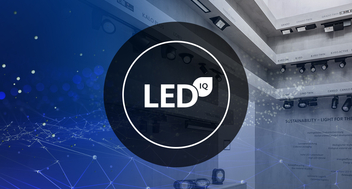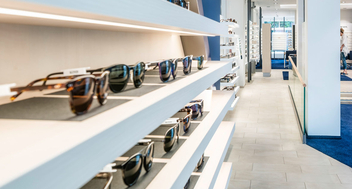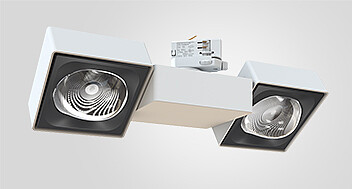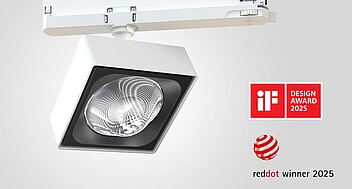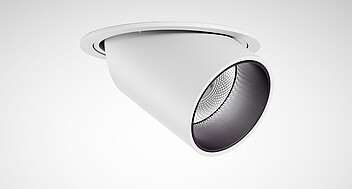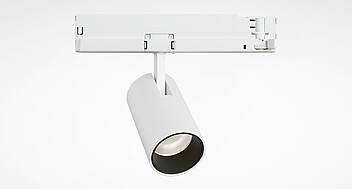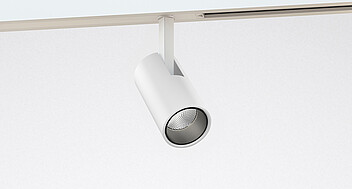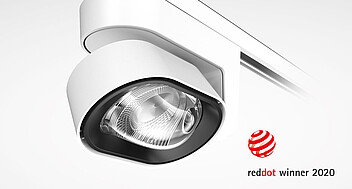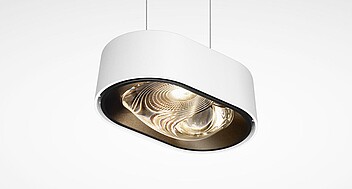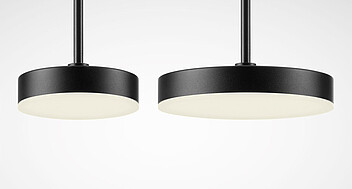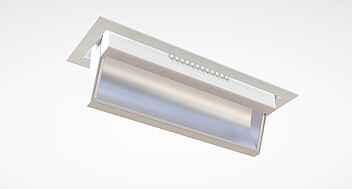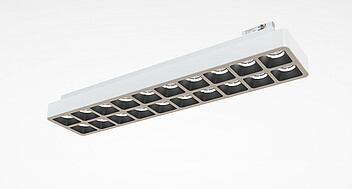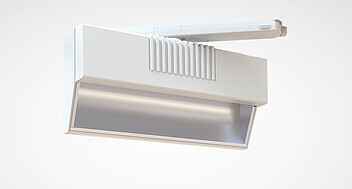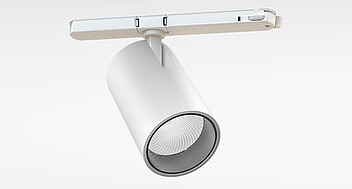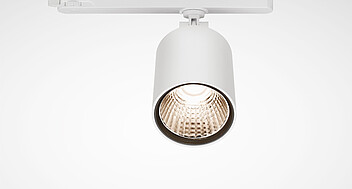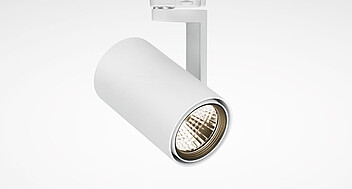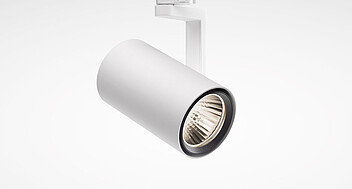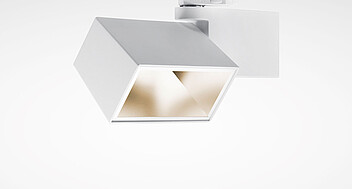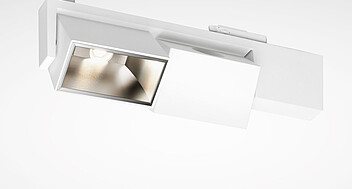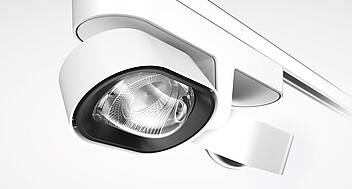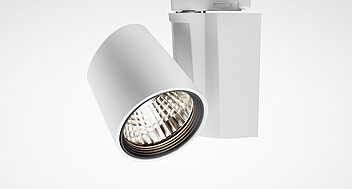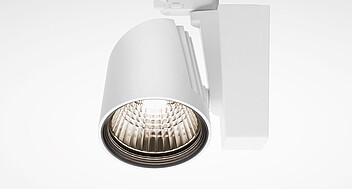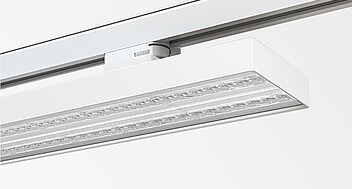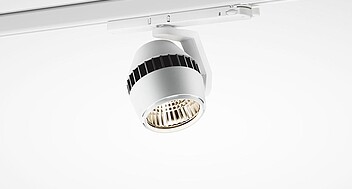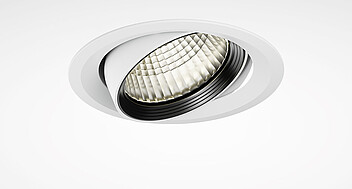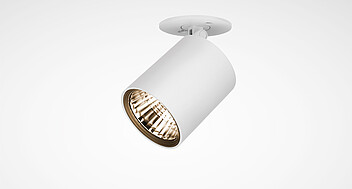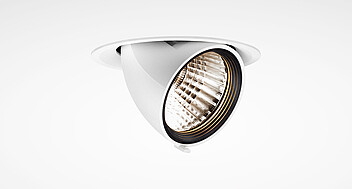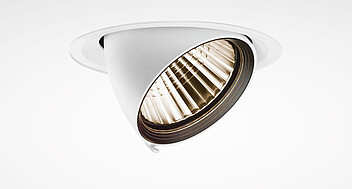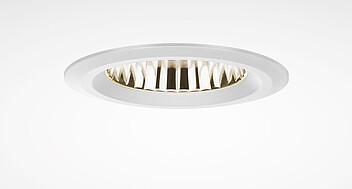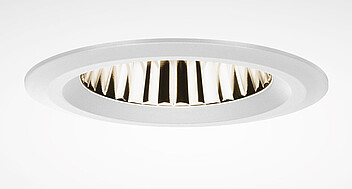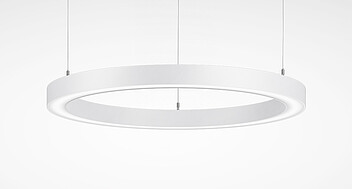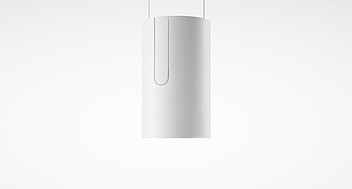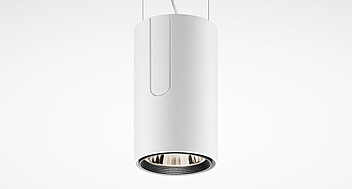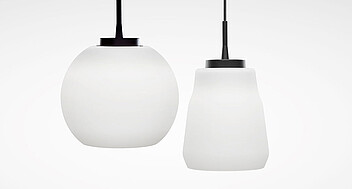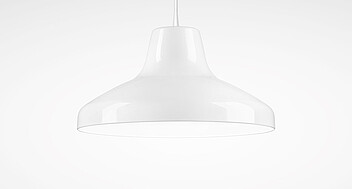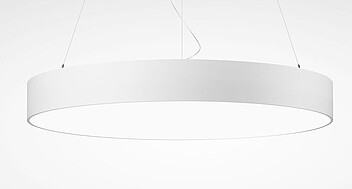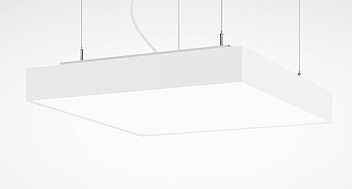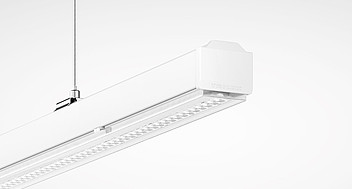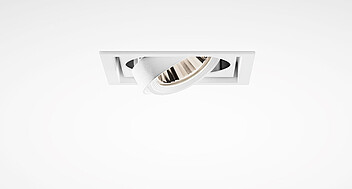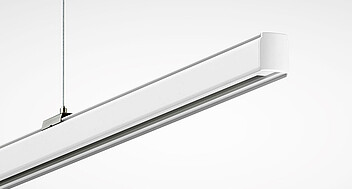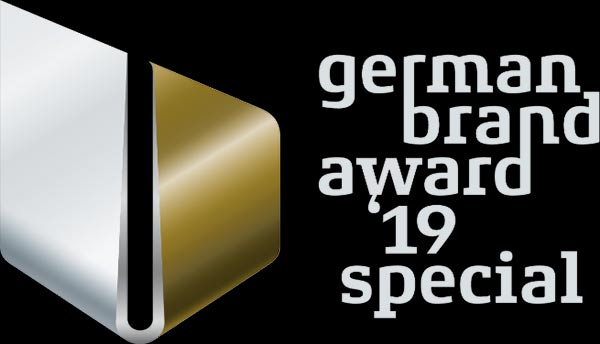X
The light dictionary
The most important terms.
B
Beam angle
The geometric angle resulting from the focal point of the illuminant and the light aperture (reflector diameter). Colloquially, the beam angle is considered synonymous with the half-value angle.
Binning
In the industrial fabrication of LED chips, variations always occur: the light-emitting properties vary for example in terms of colour and illuminance. The LEDs are sorted ensure a consistent light quality with a uniform brightness level and light colour. They are separated into bins. This binning process is particularly important for white LEDs.
Black body
A black body is an ideal thermal radiation source. Such a body completely absorbs incident electromagnetic radiation in all wavelengths and emits this energy as electromagnetic radiation with a characteristic spectrum that is solely a function of the temperature. These bodies are used to calculate a wide variety of radiations, such as light.
C
CE
With the CE mark (Conseil de l’Europe) on a product or package, the manufacturer documents on his own responsibility that his products comply with specific European Union directives. The CE mark is not a safety certification mark like the VDE, ENEC or GS marks. It is not intended for consumers but for the authorities responsible for monitoring these EU directives. A product marked solely with the CE symbol has thus not been tested by a recognised, independent certification authority.
Chromatic locus
The chromatic locus is defined in the CIE colour space using an x- and a y-coordinate. The values for x and y are always between 0 and 1 and are generally specified to the fourth decimal place.
CIE colour space
The colour space was first defined in 1931 by the International Commission on Illumination (CIE) and includes all perceptible colours in a coordinate system. It takes the varying perceptions people have of different colours into account. The colours are described in the colour space using an x-value and a y-value.
COB
Chip-on-board (COB) technology is a technology for directly mounting unhoused semiconductors on circuit boards to create an electronic module. Today, the term COB is used for all modules that contain the bare semiconductor.
Colour rendering index
A colour rendering index is a photometric quantity for describing the quality of the colour rendering of light sources of the same correlated colour temperatures. The index is currently determined using 14 test colours as defined by DIN 6169. It is common to denote the colour rendering index with Ra or CRI. This is called the general colour rendering index and comprises the arithmetic value of the first eight test colours, #1 through #8. Lamps with a Ra > 90 may be considered to have excellent colour rendering.
Colour rendering
The colour rendering of a luminaire describes the colour impression created through illumination using this lamp. The light bulb and sunlight (daylight) are considered reference sources for an optimum colour impression.
Colour temperature
The colour temperature is a light quantity indicating the temperature of a light source that a black body would need for its light to create the same colour impression. The colour temperature is specified in kelvins (K).
Cone chart
The cone chart is a graphical representation of the illuminance at various distances.
D
Die
The individual LED semiconductor crystal.
E
ENEC
ENEC (European Norm Electrical Certification) is the European safety mark for luminaires and other electrical and electronic products. It is issued by neutral testing and certification bodies in Europe, in Germany e.g. by TÜV Rheinland, for which the number 24 next to the ENEC mark stands.
Equipment class
The equipment class is the range in which the lamp lumen output falls.
F
Failure rate
The failure rate indicates what percent of installed luminaires may fail during the specified service life.
False-colour representation
The false-colour representation of a lighting calculation is used to illustrate the effect of different illuminances on the respective furnishings and spaces. Depicting the scene in bold colours makes it possible to recognise the fine nuances of illumination on furnishings, merchandise, merchandise stands and walls.
I
IEEE
Institute of Electrical and Electronic Engineers. In 2014, the IEEE was, with more than 430,000 members in more than 160 countries, the biggest technical professional association in the world. Its purpose is the promotion of technical innovations for the benefit of humanity.
Illuminance
The illuminance E is a quantity that specifies the lumen output from a light source incident on a specific surface, and is measured in the unit lux (lx). E is one lux when the lumen output, or luminous flux, of one lumen evenly illuminates an area of one square meter.
L
L80/B10
The L value provides information about how high the remaining luminous flux is in comparison to the luminous flux of a new LED in percent. The B value is the percentage indication of how many luminaires are below the indictaion of the L value. If no B value is given, by definition 50 % applies, i.e. B50.
Lamp lumen output
This value indicates the lumen output (or luminous flux) irradiated by the luminaire or LED.
Lamp power
The lamp power is specified in watts and indicates only how much energy the individual lamp or LED consumes. By contrast, the system performance describes the energy consumption of the entire luminaire.
LED
LED stands for Light Emitting Diode. An LED is a diode, i.e. a semiconductor element, that emits light when forward current is present. The wavelength and thus the colour depend on the semiconductor material used.
Light distribution curve
The light distribution curve describes the distribution of the light in space. The shape and symmetry of the light distribution curve describe deep and broadly radiating, respectively symmetrically and asymmetrically radiating luminaires or reflectors.
Light intensity
The light intensity is the measure of the lumen output of a light source per solid angle. It is measured in candelas (cd).
Lumen output (luminous flux)
The lumen output is the total radiant output of a light source. It describes the light radiated by the light source in all directions. It is measured in lumens (lm).
Lumen output decline
The lumen output decline describes the decline in light output due to ageing of the semiconductor material as well as changes in external conditions (e.g. ambient temperature).
Lumen
The lumen is the unit of luminous flux. One lumen is the luminous flux emitted by a point-type light source within a uniform angle of 1 steradian that has a uniform light intensity of one candela. A steradian is the normalised angle in three dimensions.
Luminaire efficiency
The luminaire operating efficiency describes the percentage of emitted light in relation to the light emitted directly by the illuminant. It is influenced by a non-optimum operating temperature and a poor reflectance of the reflector.
Luminance
The luminance (L) describes the brightness impression of an illuminated or luminous surface. The luminance is specified in candelas per square meter (cd/m2).
Lux
The lux is the unit of illuminance, the unit symbol is lx. One lux is equivalent to a luminous flux of one lumen on a surface of one square meter: 1 lx = 1 lm/m².
M
MacAdam ellipse
MacAdam ellipses, named after David L.(ewis) MacAdam, are used for determining visual colour deviations. They describe an area in the CIE chromaticity diagram that contains all the colours that can no longer be distinguished by the human eye from the colour located at the centre of this ellipse. Up to 3 MacAdam colour tolerances are practically undetectable.
P
Phosphorous conversion layer
In this layer, the blue, short-wavelength light of an LED is converted to longer-wave light. This enables production of a virtually continuous spectrum of cyan, green, yellow and red wavelengths. In conjunction with the blue spectrum, of which small portions shine through, white light is produced using an LED. Due to the physical processes taking place in the LED crystal, the individual LED die is unable to emit white light by itself. By varying the composition of the conversion layer, and thus the degree of conversion into the individual colours, white light can be produced in various colour temperatures.
Planck curve
The Planck curve is usually portrayed in the CIE colour space. It describes an imaginary series of colour loci that a black body would emit within the CIE colour space as it is increasingly heated (e.g. from 1000 K to 10,000 K).
Power consumption
In illumination technology, the power consumption describes the electrical power in watts (W) consumed by a ballast or lamp.
R
Reflectance
The reflectance specifies what percent of the lumen output falling on a surface is reflected. Light surfaces have a high reflectance, while dark surfaces have a low value.
Ripple value
The statement of the ripple value is a clear performance feature of the luminaire. The level of the ripple current and its frequency are decisive for how strongly the “flickering” of the LED equipment is perceived. By the use of innovative COB (chip on board) and electronic technologies, the ripple share is reduced to < 1 % and is hence no longer consciously or unconsciously visually perceptible for the human eye.
S
System luminous flux
This value designates the luminous flux radiated by the entire luminaire/illumination system. Unlike the lamp lumen output, the system luminous flux corresponds to the luminous flux actually incident on the illuminated surface. It is calculated by multiplying the total lamp lumen output by the luminaire operating efficiency.
Service life
The service life indicates the period after which a defined number of lamps of an illumination system will fail and/or when a defined number of lamps will fall below a specific lumen output. Thus, a mean service life would mean failure of 50 % of lamps. The service life of lamps is not an absolute value and is not always useful for direct comparisons, as it can depend on numerous factors such as the switching frequency or even the temperature.
Solid angle
The solid angle is specified in steradians (st). The value of the solid angle describes the ratio between the radius and the surface described by the angle of a standard cone. If the cone has a radius of 1 m, the steradian encloses a conical surface of 1 m².
Z
Zhaga
Zhaga is an industry-wide consortium that is working to develop standardised specifications for the interfaces of LED modules. The aim of this cooperation is to make LED light sources manufactured by different companies interchangeable.
Contact
Adres
Oktalite Lichttechnik GmbH
Mathias-Brüggen-Straße 73
50829 Keulen
Duitsland





